Deer species are hoofed, ruminant mammals forming the family Cervidae. The primary deer species in the Yukon include: Moose – the largest of the species; Caribou, Elk and Mule and White-tailed Deer which have migrated in from Alberta and British Columbia over the past 250 years, Mule deer are very well established with their range documented to extend up to the Arctic circle.
Many of the Preserve’s visitors are fascinated by the antlers, held by members of the cervid family, and ask many questions about them. This article will explain some of the basics on the annual growth and shedding of the antlers and how they play a critical role in the breeding cycle of these animals. We’ll focus on the largest and arguably one of the most Canadian iconic members of the deer family – the moose and his antlers.
Cervids, or members of the Deer Family, grow antlers. Only males grow antlers, with the exception of Caribou. Photo left to right: Caribou, Elk, Mule Deer, Moose.
Let’s begin when last year’s antlers fall off sometime in the mid-winter following the conclusion of the breeding cycle. The antlers separate from the skull at the point of attachment called the pedicel – the base. The antlers – a growth of bone that is chemically altered to fatigue when the animal’s hormones change following the rut, (a term for the breeding season), which also coincides with shorter days and less sunlight. The cast off of the antlers at the pedicle produces an open wound. Like any open wound there is some amount of bleeding, but it does not appear to be a concern for the animal, the blood clots and is washed off by precipitation and a scab like covering develops.
Antlers separate from the skull at the pedicel, typically in the winter months.
After a couple weeks the new antlers begin to form, and it is not like a tooth where a replacement pushes the old one out of the way in order to grow, it follows a different process. A new antler bud grows in the pedicle of the animal’s skull. Soon after the antler bud has grown for a few days a soft fuzzy fur-like material forms on the bony bud. This is antler velvet and it is an organ. It contains blood vessels, capillaries and nerves that facilitate the growth of the antler over the coming months.
Velvet covers growing antlers: it contains blood vessels and nerves to facilitate rapid seasonal growth.
While antlers are growing they are engorged with blood and are quite soft and delicate, so much so that the animal is very cautious to not damage their new antlers in any way. If they do become broken or damaged, the animal is stuck with the injured or malformed antler until the next year when a new set will grow after shedding the damaged one later in the present year. A damaged antler may also develop into a ‘non-typical’ antler where it does not match the one on the other side and is often considered a deformity. As an antler bearing animal ages there is a shift in hormone levels, just like humans, and this can manifest in antler deformities or increased ‘non-typical’ tines. As for humans, aging and hormone changes can mean greying hair or more brittle bones. These malformations can spell misfortune for a bull when it comes to successfully fighting off males and attracting females in the rut – we’ll get to that soon!.
Antlers can be damaged during growth; asymmetrical antlers can be the result. This can spell bad luck for a male when it comes to successfully fighting off males and attracting females.
Antlers grow very quickly. In fact, they are the fastest growing tissue of any mammal. If the animal has a rich and voluminous diet, moose antler growth can mean packing on a pound each day, in the form of bone of course. Coastal moose in Alaska tend to grow the largest antlers due to the quality and diversity of plants that grow in the temperate coastal areas of their rain forests compared to the colder and less vegetated areas inland like the Yukon. These full sets of antlers are often referred to as a rack.
Moose happily browse the aquatic and terrestrial plants they prefer as their new antlers continue their rapid growth. The high levels of sodium found in aquatic plants help moose antlers to grow quickly. Moose adapt to the additional weight and mass of their antlers and can be very exacting in their use for scratching. They know where each antler tip is and how to control their movements with great precision. One of the most remarkable examples of how well moose can control themselves with a large rack is their ability to walk through a forest and not make a sound as they weave their way through the trees with the equivalent of a kitchen table upside down on their head. They can also scratch delicate parts of their anatomy with an antler tip with little fuss.
Velvet hangs from antlers as bull moose browses aquatic plants in marsh at Yukon Wildlife Preserve.
Over the summer season moose continue to gorge on vegetation as their antlers grow within the velvet encasing them, then a number of changes take place as the autumn season approaches. The first frost and dwindling day light is a turning point and triggers a hormonal change in the animal whereby blood flows back into the animal’s body and stops flowing to the antlers causing the velvet to dry after a few days and become itchy. At the same time bulls that are reproductively mature experience other hormonal changes in anticipation of the rut.
The itchy antler velvet gets rubbed off on trees and the bulls do not look their best as ribbons of bloody velvet hang from their antlers. As they dry, the antlers grow hard due to the process of mineralization and result in a two-type cartilage and bone structure. The inner portion is less dense, spongy bone that has been highly vascularized during growth. The compact outer shell of the antler is of greater density and is very strong and solid and will become the weapons used when fighting other bulls during the rut which is coming up fast.
Once velvet has shed, antlers calcify becoming strong and solid. Males are now ready to challenge each other for breeding rights to females.
In preparation for the competition among the bulls (males) to breed a cow (female), the bulls announce themselves by urinating on their bellies or sometimes on the ground and then roll in the mud produced. The purpose of this is to get their scent or pheromones to be carried on the breeze letting the cows know where he is; his readiness to mate and making it easier to be found. Of course other bull moose smell this too and a number of them will gather in a common location on a mountain pasture and their mating fights begin as the bulls gather for the annual main event.
Bears, wolves and other predators also smell the moose pheromones and for them it is like the ringing of a dinner bell and they too gather nearby to take advantage of the situation that will soon unfold.
Elk males, like moose, may announce themselves by urinating on their bellies or sometimes on the ground and then roll in the mud produced
Bull moose stop eating when they go into the rut, partly because of the change in their hormones and also because they don’t have time as they are quite busy chasing other bulls away or fighting with them. Some moose can lose a substantial amount of weight when in the rut rendering them weaker and susceptible to greater injuries. Antlers can do some serious damage to other moose where an eye could be lost, a major organ could be pierced by an antler tip or many other injuries, such as muscle punctures could be sustained that would make it much easier for a grizzly to be successful in it’s hunt for food. That’s why predators hang around the rutting areas, it often results in injured moose bulls that are easier to overtake due to their wounds.
When the cow moose go into estrus or heat, they are only then ready to be bred. Some documentary TV programs elude that it is the bulls’ fighting prowess that determines which bull gets to mate, that may be true but it is not the only consideration. The cow still selects which bull she will mate with and it may be the result of the fights, or the appeal of the bull’s pheromones or other factors we are unaware of. But her goal is to produce the best offspring possible and how she makes that determination is her business. The cow will only breed once, while the bull’s goal is to breed as many cows as he can.
Once all the breeding is concluded, the cows and the bulls go their separate ways and will remain isolated from each other until next year’s breeding season occurs again. During this time, the bull’s antlers fall off and the antler cycle starts all over again.
Cow moose may give birth to a single calf or twins and sometimes triplets in the late spring after the ice and snow have turned to water once again. The bulls wander independently between the low river valleys and the mountain tops browsing while their new antlers grow as they evade predators until the rut calls them back to that special place where the breeding games begin anew.
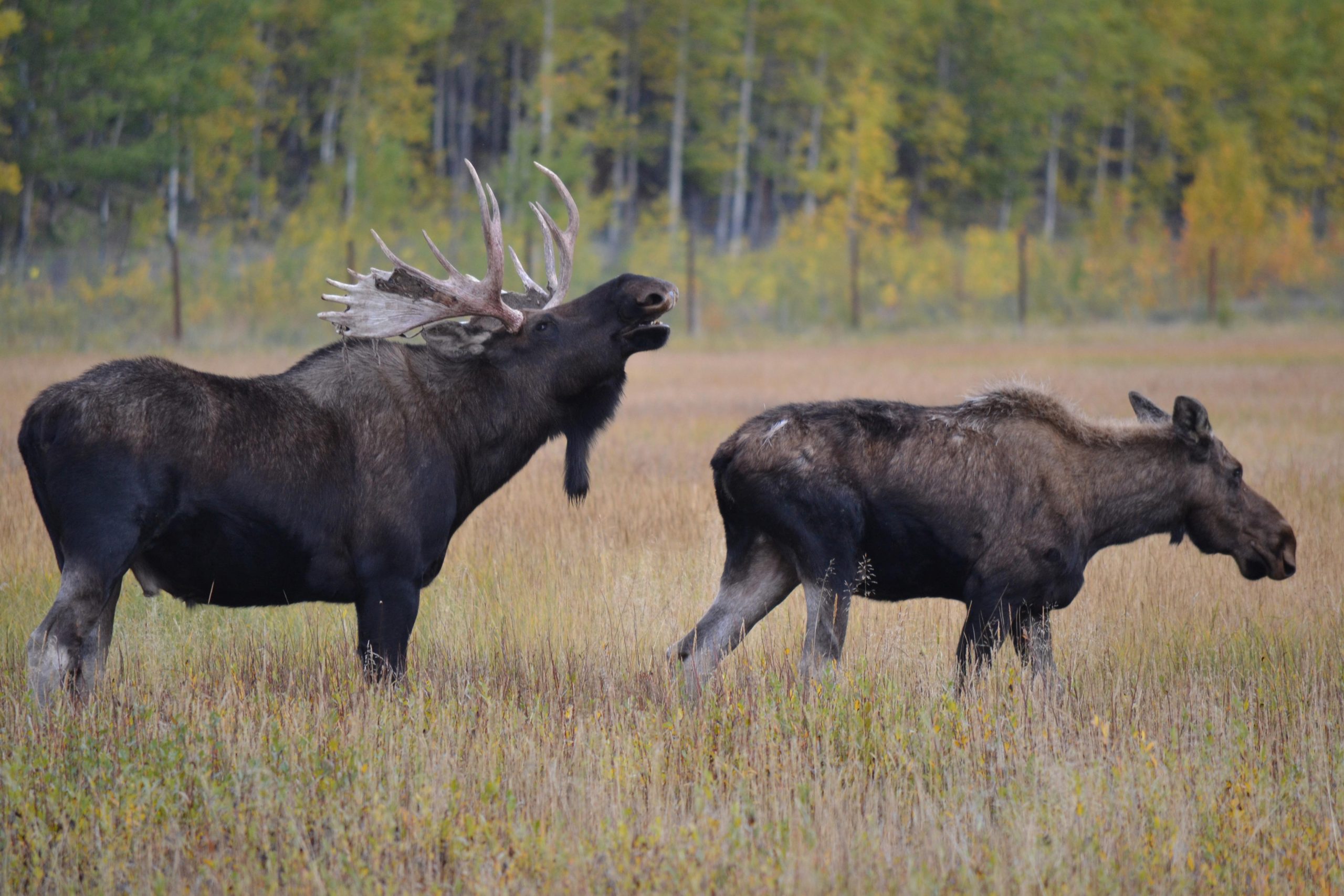



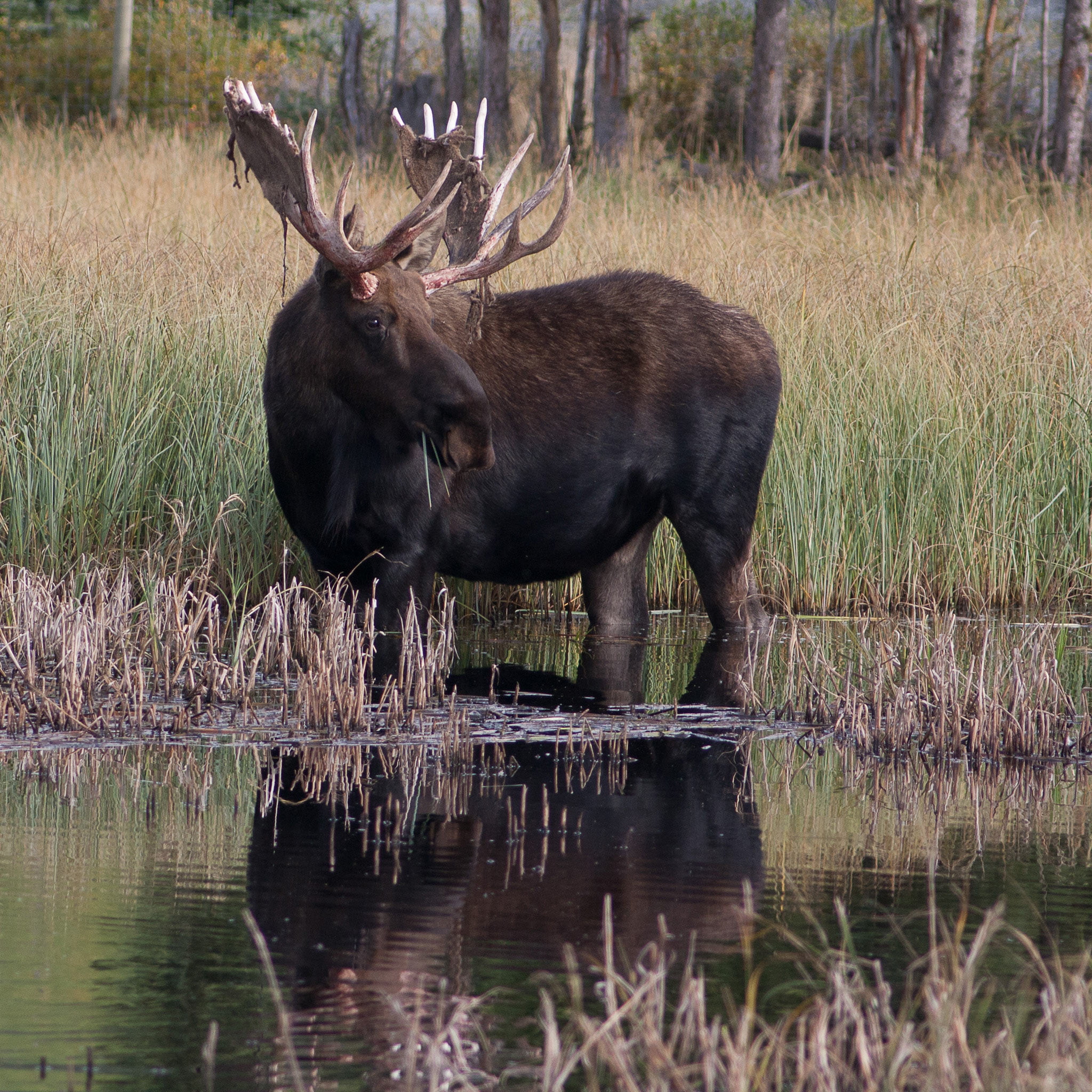



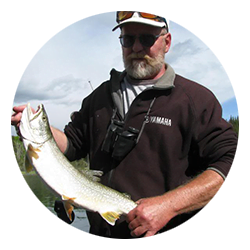
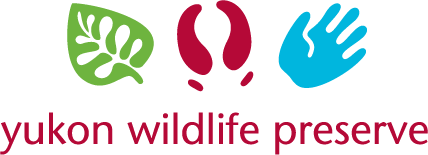


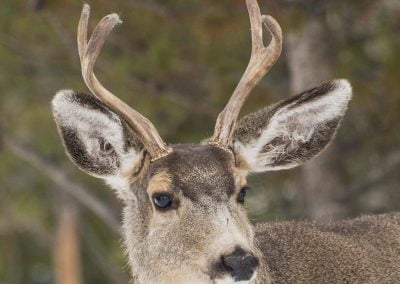

How old is the cow when she quits breeding?
Thank you
Cow moose typically can bear offspring from 3 to 14 years of age, but may be influenced by their general health and diet as nutrition is a critical factor in a healthy gestation term of typically 8 months. It is not uncommon for a cow moose to skip a year or two from pregnancy due to forest fires and similar events and the impact to available vegetation in their region.
I love to watch large animal nature shows and shows like “Alaska the Last Frontier”, “Yukon Men”, “The Last Alaskans”, “Buying Alaskan” and others. I not only enjoy the beauty of the land but the animals also. I find these shows very informative as was your article. Most of what you said in your article I knew but I still learned a few things and enjoyed it very much. Thank you very much. Good job.
Great information! So interesting to read about all of God’s creatures!
Thank you!
I live on the banks of Kachemak Bay in Homer Alaska. Today I had three moose come into my meadow. One was an adult cow, one seemed to be her calf from last spring (so not quite a yearling yet) that I could not see close enough to identify it as male or female. The other was a young bull with a small rack. He was definitely bigger than the one with the cow, but not fully grown. I was calling it a rack because it was bigger than I’ve ever seen on a yearling. I was wondering if he was just still hanging out with his mother or if he joined up with them and the cow was going along with it.
A very mellow cow has come around here in winters/springs for several years. (Or so I’ve thought because of her familiarity and calmness.) She first came with twins and spent parts of her days eating hay alongside my horses that we spread out on the snow. Then she started jumping into the corrals to lick salt blocks and drink from the heated waterers in the stalls. The horses were wary but became pretty used to her and I never did see her display the laid flat ears, hackles up posture that I would’ve expected. And could she ever jump! When she came to the gate (and jumped from a standstill through a gap of about 5 feet between the top of the gate and the overhead bar) her height really made my 16.2 QH look small.
I’ve seen a lot of moose in my life, having been born here when Alaska was still a Territory, and have observed quite a variation in their attitudes and tolerance of people, dogs, etc. This one was a very polite visitor which made me wonder if it was her that I saw today. Of course I have no way to know but I’m wondering if a very mellow cow will put up with her bull calf from the past year or even the year before that.
I would really appreciate your insight!
Hi Sue, thanks for your kind words. Yes a moose calf will often spend its first year with its mother as she helps the youngster to learn and make a reliable and safe life in the wilderness. Momma moose will usually chase the calf off prior to her next breeding cycle.
Which month of the year do Alaskan moose begin to grow antlers again? How soon are the visible to determine that they are a bull and not a cow?
Hello Gene, New antlers begin to grow just a couple weeks after the previous ones have been shed. A small bone spur will appear in the pedicle and velvet will form on it soon after, then the real growing gets underway. Early stage antlers appear to be rounded at the tips and can look like another pair of ears on the animal. As to determining gender of young or antlerless moose, confirming the plumbing at the back end of the animal is the most reliable method to determine its gender.
Interesting article! What is the copyright for these photos? They’re incredible.
Thanks so much for taking the time to view the article. Photos are with permission and credit. They belong to Yukon Wildlife Preserve and the individuals’ who took them which vary depending on the exact photo.
Thank you! Fascinating information about these incredible animals. We watched a cow and her calf today for hours and it made us curious for more information.